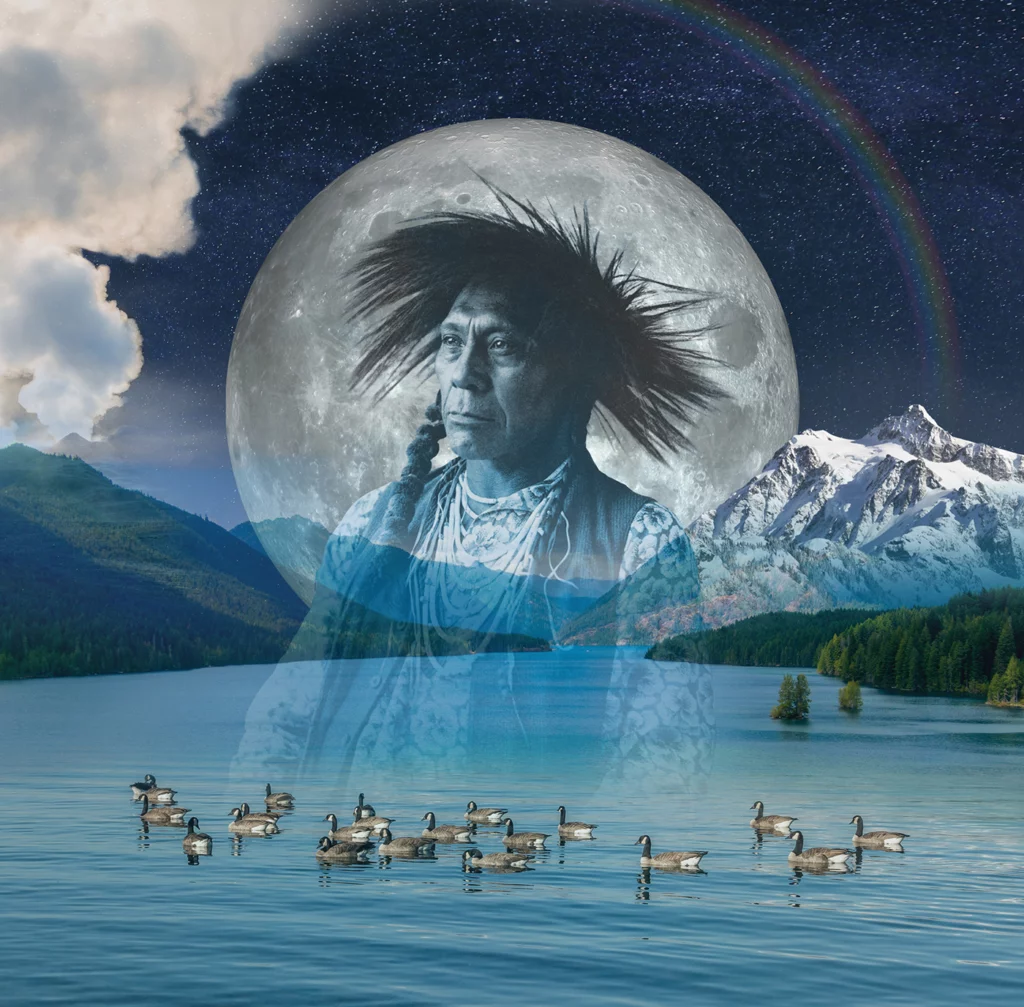The Many Lives of Water
Envision live dawning as
an adorable droplet,
being drawn to the sky by a
seemingly invisible force,
reconciling with clouds and
collecting stardust in the astros,
eternally magnetized to the moon,
transforming into a raindrop and
answering the call
to return to Earth
taking shape as a glacier,
becoming a fast-running river,
slipping around ancient rocks
reflecting the trees and skies above,
shaping the landscape and tributaries,
forming capillaries and wetlands
arriving to the sea, embodying the ocean,
holding space for all life forms to thrive.

Water is constantly in motion, changing form from liquid to solid to gas and back again. Its power to transform enables water to erode rocks and mountains, corrode metal, and extract nutrients from plants and bones.
The water present with us on Earth has been here since the beginning of time. People have long journeyed to distant hot springs, mineral pools, misty waterfalls, and formidable geysers for the promise of water’s endowed healing properties. In almost every religion, water has the ability to absorb prayers and bestow blessings.
“Water holds memories since time began and has a living spirit just like we do,” says Chenoa Egawa, a member of the Lummi tribe and a ceremonial leader, storyteller, artist, and environmental activist who is dedicated to bringing healing to our Mother Earth.
Our bodies’ innate wisdom understands how essential water is, as it makes up more than half of our body weight. “Water has the ability to cleanse itself, and because we are largely made of water, we are a part of that cleansing cycle as well,” Egawa says. “That is why it is so important to offer gratitude and prayer to water as we use it throughout our day.”
Internally, water delivers essential nutrients, moves our digested food, and regulates our temperature. Being adequately hydrated can increase our energy levels and diminish our aches and pains. Our Ancestors worked diligently to master oxidation and browning reactions for culinary creations, passed down through generations in recipes.
We are absolutely a part of the cycle of water. All of life is.
Indigenous cultures circumnavigating the planet, from Hawai‘i to the Azores, consider bodies of water to be a global unifier. In the Pacific Northwest, our waterways are the ancient highways that connect our villages and families. But water need not be abundant to be appreciated as the gift it is.
“One of the first things we teach our children is how to read clouds, because we know that is the language of water and how it connects to everything around us,” says A-dae Romero-Briones, who is Cochiti and Kiowa. “From our beginning as a people, our homelands in the Southwest constantly teach us how to respect, revere, and honor water,” says Romero-Briones, who holds a law degree in Indigenous food and agriculture and has in-depth knowledge of Native food systems and economies. “We choose to live in a place where water is scarce because that is how we understand its preciousness and never take it for granted. We have built an entire society and culture to ensure we never forget that.”
But, like so many of our essential nutrients, water has become a commodity. Access to clean and safe water is becoming more challenging worldwide. While we need to consume this sacred water to exist, we must also work hard to repair our relationship with this almighty medicine. Many are standing up to protect water. Let’s also commit to connect more deeply with water.
Recipes for Water Meditations
Research where your water comes from and how it gets to your glass. Who, if anyone, i
Valerie Segrest (Muckleshoot) is a nutrition educator who specializes in local and traditional foods. She is co-founder and director of projects at Tahoma Peak Solutions LLC.
SHARE YOUR REFLECTION
4 Past Reflections



On Aug 14, 2023 Pádraig wrote:
What cost “green” energy?! Is it still fossil fuel in a different form?! “Renewable”? I think not?! At some point we must utilize the sun, the wind and elemental hydrogen to get beyond the devastation, destruction and awful side effects and waste. We still have far to go…


On Aug 15, 2023 Jagannatha Das wrote:
Post Your Reply